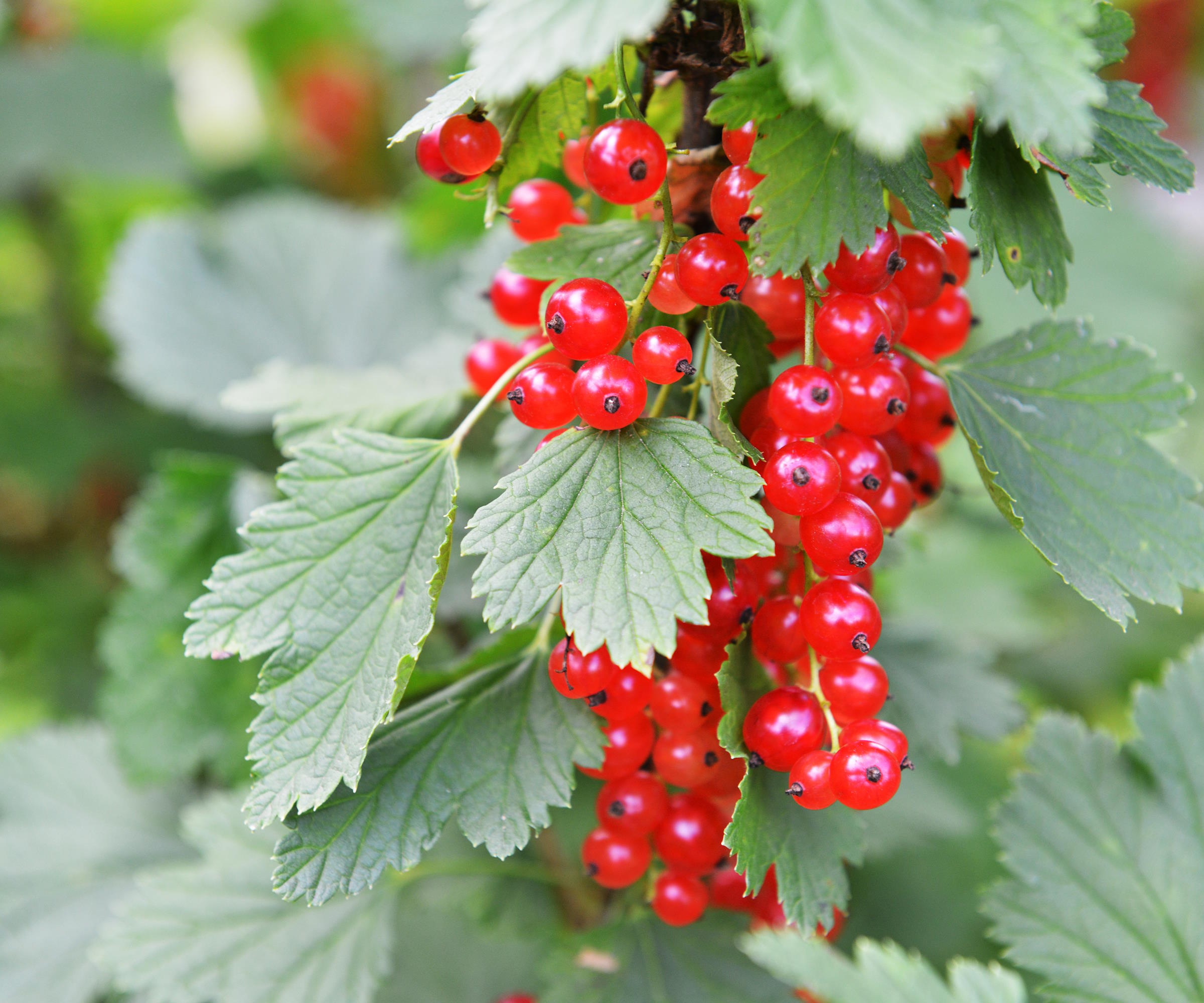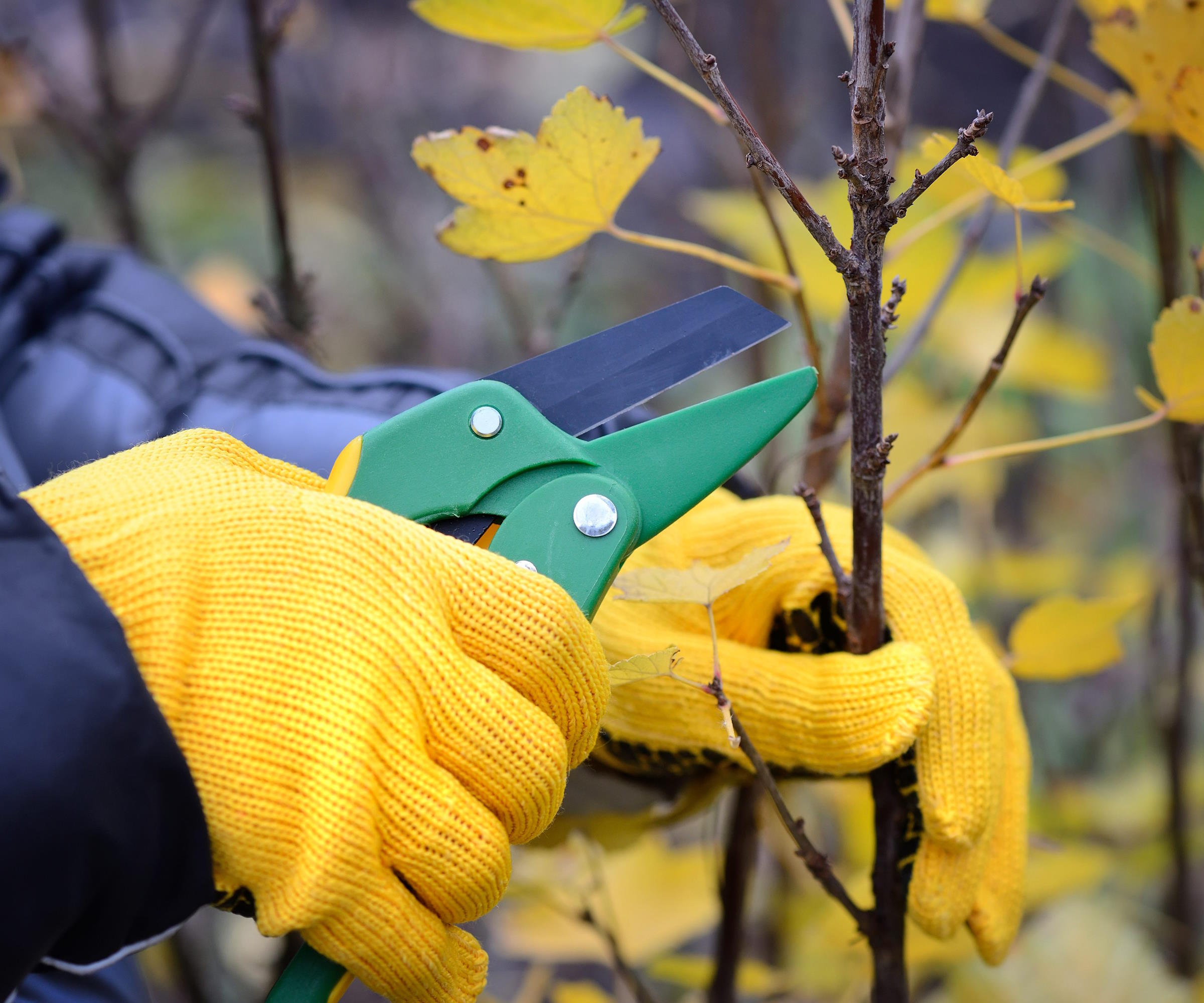When and how to prune redcurrant bushes – simple trimming tips to help you get great harvests
All you need to know about pruning redcurrants to keep your bush producing lots of tart and bright red berries


Redcurrants are easy-to-grow and heavy-cropping fruit bushes that require pruning annually to be as productive as possible. They are a crop that is growing in popularity and the method for trimming redcurrants is a relatively simple one to learn.
There were lots of redcurrant bushes in kitchen gardens I worked in over the years, along with many whitecurrants and blackcurrants. Not all soft fruit bushes are pruned using the same method, therefore it is important to know the right rules for the currant bushes that you are trimming.
Pruning your redcurrants annually while they are dormant can help to ensure that the bush has the best combination of productive wood possible. This will mean bumper harvests of shining red berries year-after-year.

Redcurrants fruit throughout summer
When should redcurrants be pruned?
Redcurrant bushes should be pruned from late winter to early spring, when the plant is dormant. This is the ideal time window to prune all manner of soft fruit bushes as the pruning is less stressful on the plant when it is dormant.
Cutting redcurrant bushes at the wrong time of year is a pruning mistake that can encourage disease or harm the overall health of the plant. Pruning redcurrant bushes when they are dormant will promote vigorous growth when the plant starts growing again in spring. While they can be pruned in late winter, avoid trimming redcurrant bushes in freezing temperatures.
Redcurrants can be grown in restricted forms as part of any small backyard ideas. While commonly grown as bushes, the plants can be cultivated as cordons as a great space-saving way to get lots of delicious fruits in a really small space. Any redcurrants grown in trained shapes can benefit from a bit of additional trimming in mid-summer.

Redcurrant bushes fruit on old wood, but the productivity of a branch drops after a certain age
How to prune redcurrant bushes
All soft fruit bushes should not be pruned in the same way. For example, redcurrants are pruned in a similar way as when pruning gooseberries, but it is a different technique when pruning blackcurrants.
Design expertise in your inbox – from inspiring decorating ideas and beautiful celebrity homes to practical gardening advice and shopping round-ups.
Whatever you are pruning in a backyard kitchen garden, always use clean and sharp pruning shears. This will make pruning easier and also reduce the risk of disease to your bushes. A pocked-sized Garden Tool Blade Sharpener, like this one at Amazon, can help you keep tools sharp while out pruning.

Sharp tools make clean cuts that are easier for the bush to heal
How to prune young redcurrant bushes
Redcurrants fruit strongest on stems that are two and three years old and their productivity then drops the older they get. This means that pruning is minimal on bushes until they are over three years old, otherwise you risk removing the fruiting branches.
For the first few years you simply want to remove any dead, damaged, or diseased branches, cut out any branches that are crossing and may potentially rub together in the future, and shorten any growth by a half each winter.
How to prune established redcurrant bushes
An established and healthy redcurrant bush should be an open and goblet shape with a framework of around 8-12 strong main branches. The bush wants to have a good mix of branches that are one, two and three years old.
The first step in pruning redcurrant bushes in winter is to again identify and completely cut out dead, diseased, and damaged branches, along with crossing and rubbing branches.
Any branches that are older than three years old are going to be less productive and are best cut completely to the ground. The bush should tend to have two or three of these stems and the oldest wood will be the darkest in color.
Side-shoots growing from the rest of the branches are then cut back by around a third in size, ideally pruned back to two buds and a bud that is facing outwards. This will encourage new growth and fruiting spurs that will carry the berries next year. Any congested or weaker younger wood is pruned out to help create an open center to the bush.
If there are any stems that are almost at ground level, they are best removed as they will sit on the floor when ladenned with berries. Take care not to get too carried away and obey the one-third pruning rule to not remove more than a third of the total wood on the bush.
How to prune trained redcurrant bushes
Cordons are simple to grow and prune. New cordons should have the leading shoot pruned back by a quarter and all side shoots shortened down to one or two buds until it reaches the desired height.
For the following years, the winter pruning involves cutting all laterals back to one inch - to one or two buds - and removing suckers from the base of the main stem. Summer pruning of cordon redcurrants involves reducing the new growth by trimming all side-shoots back to four or five leaves.
FAQs
When can I move a redcurrant bush?
The ideal time to move redcurrant bushes is from late fall to early spring. It is best to move the bushes when they are dormant to reduce the stress on the plant.
Dig a large hole to accommodate the bush and mix some organic matter, such as compost or well-rotted manure, into the hole. When transplanting a shrub or soft fruit bush, adding mycorrhizal fungi, such as this Mycorrhizal Inoculant available at Amazon, can also help the plant establish quickly in its new home.
How tall do redcurrant bushes grow?
Redcurrants are fast-growing shrubs and can ultimately grow to around 5-6 feet in height and around 3-5 feet in width. While they will grow best in the ground, redcurrants can be grown in containers and they are self-fertile so you only need one bush to get a harvest of berries.
When you are pruning your redcurrant, it is also a great chance to take plant cuttings to grow new bushes from. Pick a healthy one-year-old stem and you can use it as a hardwood cutting.

Drew has worked as a writer since 2008 and was also a professional gardener for many years. As a trained horticulturist, he worked in prestigious historic gardens, including Hanbury Hall and the world-famous Hidcote Manor Garden. He also spent time as a specialist kitchen gardener at Soho Farmhouse and Netherby Hall, where he grew vegetables, fruit, herbs, and cut flowers for restaurants. Drew has written for numerous print and online publications and is an allotment holder and garden blogger. He is shortlisted for the Digital Gardening Writer of the Year at the 2025 Garden Media Guild Awards.
